I came into ownership of my first car in 1950. It was a ’32 model and I was a ’38. I would have preferred something older, a roadster or touring car, but the ’32 Chevy coach was attractive, was older than I was and was only $15 dollars.
In fairly rapid succession I then acquired a ’28 Chevy 4 door sedan, all apart but with good-looking tires, and a 1929 Viking Deluxe Brogham sport sedan. The latter was a big V8 that I never did get running very well.
The Viking was $22 dollars and it was really quite a handsome car. This was a GM product that was placed about equal to the Oakland (same V8, a very flat “V” and not a really proven design as was the LaSalle and Cadillac) with an Oldsmobile chassis and a LaSalle’s good looks.
Viking was offered in ’29 and ’30 and then faded fast. Mine came from an old guy in West Swanton, Vermont and goodness knows where he got it. I am not aware of any Northern Vermont dealer ever selling Viking. (Had I known Lloyd Davis at the time he would have put me on to a brand new ’29 Viking body in a shipping crate somewhere in his sphere… a convertible body… but we weren’t yet acquainted.)
I finally took a couple of the best tires off the Viking. (18″ on the ’32 Chevy. Strange about Chevy tires in those years: 1932 was the only year with 18″. The ’28 parts sedan has 21″, ’29 models had 20″ and most of the ’30s models had 19″ along with ’31 and ’32 models being in the 18″ range. In ’33 we had 17″ and it wasn’t too long before that great old rag of a 16″ took us to post war General Motors.
I sold the Viking to a guy in Manchester, Vermont for $100 dollars. I featured myself a tycoon until the check portion of his purchase ($50 dollars) bounced and I never did get that. Still, I reasoned, I had some tires and had doubled my money.
This caught the attention of Honest John Hart Macy, a weekend car dealer in Swanton, Vermont. At age 14 I began to work for him on weekends when his “We Finance” used car lot was open.
All that is another series of stories… but my point through all of this was to talk a little about first cars. OK, so it’s 1950 and I have this ’32 Chevy ready to join the family. My family had left the farm for an upstairs apartment in the middle of the city so there was no hiding it behind the barn.
After some significant discussion, I rented a dirt floor garage with no electricity on Bank Street in St. Albans and stuffed the queen of the fleet in there. I won’t go into detail as to where we hid the ’28 Chevy in pieces or the Viking at this point. Here is some of the “first car” stuff I meant to share.
The Chevy started hard and ran rough. The starting seemed electrical and I was somewhat overwhelmed so I thought that I would solve the other problem first. There were some high school kids around town, mostly Model A guys and some flat head Ford guys.
I picked the kid with the oldest car, thinking him sensitive in this area and asked him, cap in hand, if he would take a quick look at my car hidden in its dark garage and give me advice on why it ran so rough.
He agreed and came with some buddies, mostly to laugh I suspect, but after I finally got it started he listened and then pronounced, probably to impress his buddies, that the car needed an engine overhaul.
Yep, the engine would have to be rebuilt. I should have realized that a Model A guy would probably say something like that. What did he know about the extraordinary “cast iron wonder” – the Chevy 6? Actually, what did I know about that “wonder”? Not much. So I rebuilt it.
Someday maybe I can tell you of the wonder of a young boy opening up his first magical engine. With reverence and ignorance, through the winter, no heat, no electricity, dirt floor, flashlight and a set of really cheap New Britan tools from Dalton Auto Parts, I did it. In mid spring I borrowed a better battery and started it up.
The Carter Carb, the first year down draft for Chevy, was easy to prime and the car started pretty quickly… and skipped to beat hell. After a couple of days in depression I was mentioning this problem to the counter guy at Dalton. Cal Baker was a Ford man and had worked at the Ford plant but he was also a pretty good guy.
The conversation that I had with Cal changed my life. He asked me if the car was in time. I told him that my rebuild had not changed the timing gears. He said, no, no, how about the firing order… you know, the plug wires from the distributor cap.
I must have looked blank and it was then that the change occurred. He said “1, 5, 3, 6, 2, 4. Find #1 cylinder and be sure the rotor is pointing… “. Well you know the rest. “1, 5, 3, 6, 2, 4” – my new mantra.
I said it over and over again on the way to the garage. There, with my flashlight, the Chevy was “1, 5, 3, 6, 4, 2”. I switched two wires and fired it up. It still started slowly (that darn electrical thing) but it ran like a top!
Did your first car give you hallowed experience… like actually peeking into a differential or really actually seeing the oil pump? Did it have a strong effect on you? Do you have stories about those early experiences? I hope you do. It confirms the fact that you are an Enthusiast… and even better, if you are reading this, a Vermont Automobile Enthusiast.










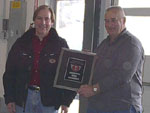
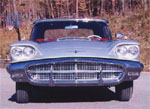

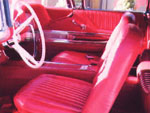
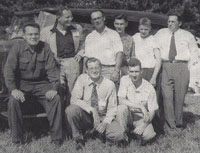 Older members will remember Pev as a charter member and a super supporter of all our early activities. His picture appears all through our 40th year book, in a wide variety of cars over many years of events.
Older members will remember Pev as a charter member and a super supporter of all our early activities. His picture appears all through our 40th year book, in a wide variety of cars over many years of events. I’m sure that all VAE members are enthusiastic about our hobby. In this, our 50th year, there may even be more enthusiasm than usual and this is great.
I’m sure that all VAE members are enthusiastic about our hobby. In this, our 50th year, there may even be more enthusiasm than usual and this is great.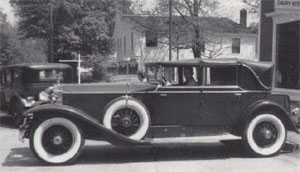 February’s “Enthusiast” Award goes to the Jones Family. This 3-generation family has been with us from the start and has always come through. Walter and Hazel Jones of Morrisville had the interest, the cars, and they had Bob.
February’s “Enthusiast” Award goes to the Jones Family. This 3-generation family has been with us from the start and has always come through. Walter and Hazel Jones of Morrisville had the interest, the cars, and they had Bob.